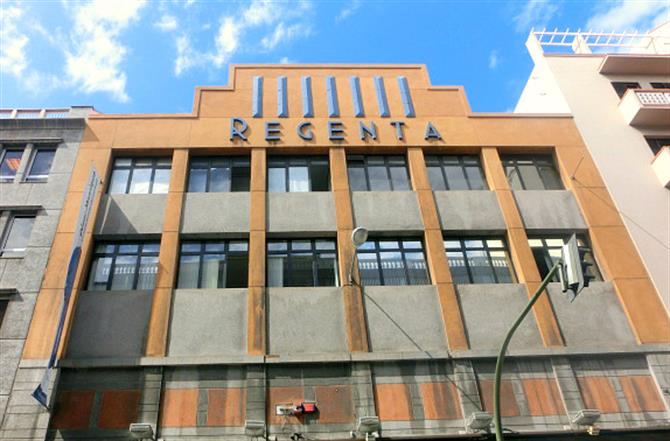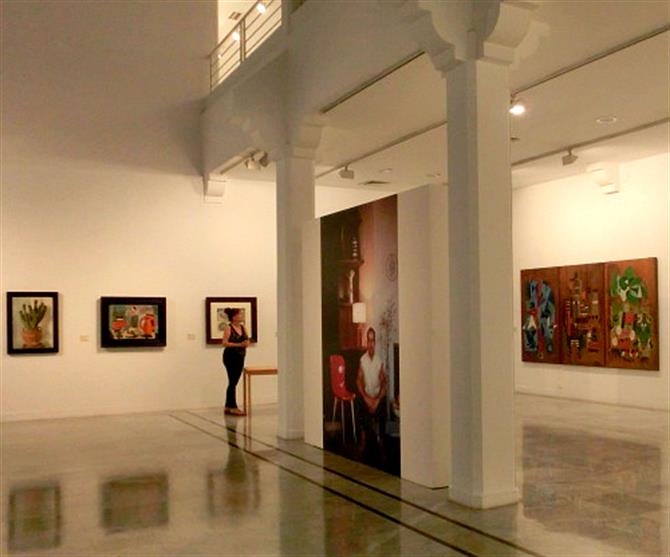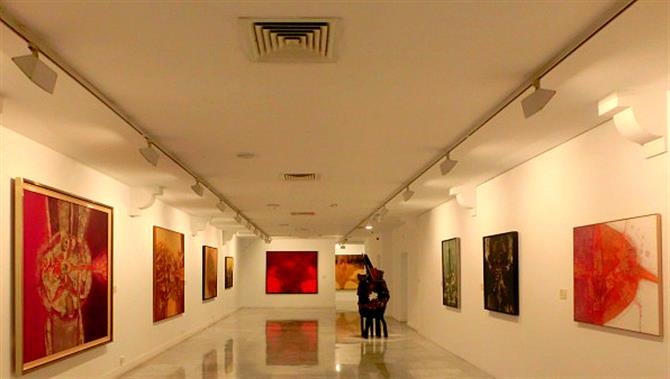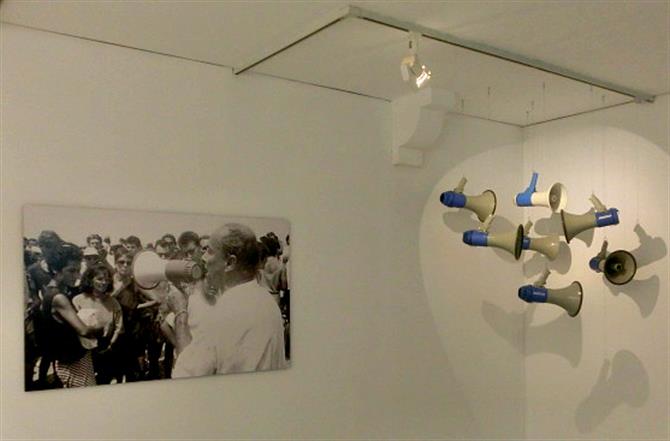The Centro de Arte La Regenta's one of Las Palmas de Gran Canaria's premier art galleries. It's centrally located, making it easy to find. Another plus point is that there's no entrance fee.
Just where is the Centro de Arte La Regenta at?

There are two answers to that question. The first relates to La Regenta's physical location. You'll find this one-time tobacco factory, which celebrated its 25th anniversary as an art gallery in 2012, at the Parque Santa Catalina end of C/León y Castillo.
The second answer relates to what's on at this gallery, with regular exhibitions showcasing the work of contemporary artists local, national, and international. When I visited, it was the turn of legendary Lanzarotean César Manrique. You have until the 11th January 2014 to check out César Manrique, La Conciencia del Paisaje, a career retrospective.
Mad about Manrique

César Manrique (1919-1992) is the standout figure in the world of 20th-century Canarian art. Principally known as a painter, he also wrote and involved himself in architectural projects as well as graphic and industrial design. "La Conciencia del Paisaje" translates as "The awareness of landscape" and there are few artists who clicked so much with their surroundings as Manrique with his beloved Lanzarote.
Downstairs at La Regenta, you're invited to explore a portrait of the artist as a young man. You'll learn about his studies at the San Fernando School of Fine Arts in Madrid from 1945-1950. Every summer, he'd return to his home island of Lanzarote to reconnect with his roots.
Lanzarote's fire and brimstone

César Manrique paid tribute to Lanzarote's "constructors", his predecessors and contemporaries who made living on Lanzarote's unique landscape more hospitable than you'd imagine. When he lived in Madrid, he'd played patriot games by entertaining guests at his dinner parties dressed in the attire of a Lanzarote fisherman. Returning to live in the land of his fathers, he'd paint works of arts such as 1974's Caparazón which depicted such natural phenomenon as a lava explosion.
You can visit this exhibition, and indeed any other, from Tuesdays to Fridays between 11:00am and 2:00pm and 5:00pm and 8:00pm. The Centro de Arte La Regenta's also open on Saturdays from 11:00am to 2:00pm. However, it's closed on Sundays, Mondays, and public holidays.
Manrique the Activist

Although his critics point to a young César volunteering to fight for Francoist forces during the Spanish Civil War, this is not his legacy. Later, Manrique would realize the potential of tourism to become Lanzarote's saviour. But he ensured a sensitive development, with tourist buildings kept low-level so as not to disturb the image of Lanzarote architecture as bougainvillaea-clad whitewashed abodes.
As well as reproducing what Lanzarote meant to him on canvas etc., César Manrique worked tirelessly to help his birthplace. The Spanish military used to bring fresh water from the mainland on boats. It was Manrique collaborating with like-minded, forward-thinking individuals which led to the creation of Europe's first desalination plant on Lanzarote's shores.
